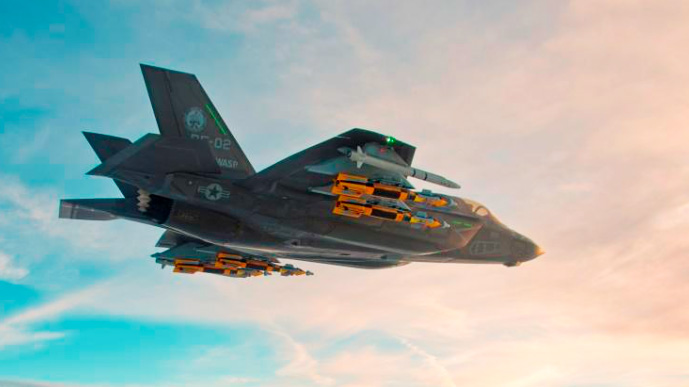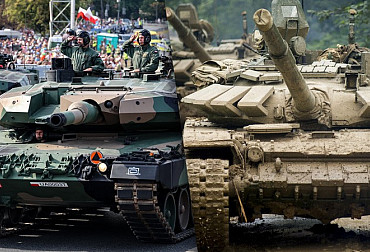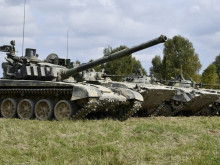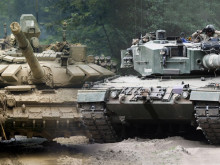Let's not be afraid of offensive weapons
The Army of the Czech Republic has never been an offensive army and has played a primarily supporting role within the Alliance, which was a result of strategic documents and the nature of the security environment, in which the main threat was global terrorism. However, in the context of the war in Ukraine, a transformation of the security environment is coming that will require greater involvement even from the Alliance's lesser states.
The above can be defined as a situation in which other armies will also have to perform tasks that in past years have been the exclusive domain of the US, or the UK or France. These are mainly offensive kinetic operations in the air domain using precision weapons. It is in this area that the Alliance's superiority over potential adversaries lies. However, in the context of both the war in Ukraine and the shift of (not only) American attention to the Indo-Pacific, the question arises whether the Alliance will continue to have superiority in the air domain in Europe in the area of conventional operations against ground targets.
If we want to take responsibility for our European defence and security and actively participate in its provision, it is necessary to accept that the Czech Air Force will no longer be primarily a support component in Alliance operations and will not participate only in air policing, but will have similar offensive capabilities as those of the larger allied air forces.
As with other categories of weapon systems, inspiration for precision weapons against ground targets can be found abroad. The author of the article chose Germany, Poland and Slovakia as possible examples as our closest Alliance neighbors and Finland as a more distant country, but comparable to the Czech Republic, which will soon become a member of the Alliance.
In connection with the purchase of the fifth-generation F-35 aircraft, Germany has decided to purchase 75 AGM-158B/B2 Joint Air-to-Surface Standoff Missiles-Extended Range (JASSM-ER) missiles, 344 GBU-53 Small Diameter Bombs (SDB-II) precision bombs, and a total of 426 guidance kits for the Joint Direct Attack Munition (JDAM) category of bombs, according to a Defense and Security Cooperation Agency (DSCA) report from late July of this year. Our northern neighbor, Poland, decided to purchase 70 JASSM-ER missiles back in 2016. Our Slovak allies, as part of the modernization of their air force and the purchase of American F-16V aircraft, have decided to purchase 150 guidance kits for the JDAM bomb category.
 Picture: In connection with the purchase of the fifth-generation F-35 aircraft, Germany has decided to purchase 75 AGM-158B/B2 Joint Air-to-Surface Standoff Missiles-Extended Range (JASSM-ER), 344 GBU-53 Small Diameter Bombs (SDB-II) precision bombs and a total of 426 guidance kits for the Joint Direct Attack Munition (JDAM) category of bombs, according to a Defense and Security Cooperation Agency (DSCA) report from late July this year. (illustration photo) | U.S. Air Force
Picture: In connection with the purchase of the fifth-generation F-35 aircraft, Germany has decided to purchase 75 AGM-158B/B2 Joint Air-to-Surface Standoff Missiles-Extended Range (JASSM-ER), 344 GBU-53 Small Diameter Bombs (SDB-II) precision bombs and a total of 426 guidance kits for the Joint Direct Attack Munition (JDAM) category of bombs, according to a Defense and Security Cooperation Agency (DSCA) report from late July this year. (illustration photo) | U.S. Air Force
Finland is a separate chapter, as the Nordic country shares its border with Russia and is therefore arming itself massively (e.g. buying 40 more F-35s than the Czech Republic plans to buy). Finland also wants to focus heavily on its capability to operate against ground targets as part of its 64 F-35 purchases. Therefore, the Finnish government has sent a request to DSCA to purchase 500 SDB-II precision bombs, 100 AGM-154C-1 Joint Stand Off Weapon (JSOW-C1) missiles, 200 JASSM-ER missiles and 300 JDAM guidance kits.
On the other hand, however, there are states sharing their borders with Russia (the Baltic States) that rely entirely on allied allies, such as the Czech Republic, to protect their airspace, which places additional demands on them in arming their supersonic air forces.
In addition to the above-mentioned conventional weapons, it is necessary to consider in the future which European states will provide, for example, advanced offensive electronic warfare capabilities in the form of AGM-88 HARM missiles against electromagnetic radiation sources in the absence of American, British or French capabilities. Obviously, this may not be the Czech Air Force, as the training and eventual acquisition of this capability is technically, financially and time consuming, but it is good to know that this capability is a future part of the F-35's capability set. In this sense, the possible acquisition of F-35 aircraft for the Czech Air Force should be considered in such a way that in the future, after great expectations, there will not be a big disappointment when the F-35 will perform only limited tasks in the Czech Air Force, as we have seen with the JAS-39 Gripen.
The eventual failure to use all the capabilities will not only be water on the mill for critics of the project of introducing the F-35 into the Czech Air Force's armament, but above all a mistake that may backfire at a time of escalating international situation. Therefore, let us not be afraid of introducing offensive capabilities and taking responsibility for European defence, as this is the best recipe for deterring potential adversaries.





















